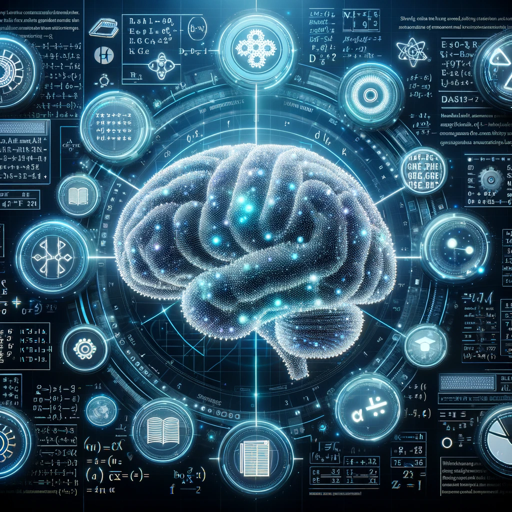Mindful Therapist-CBT-based thought restructuring tool.
AI-powered Cognitive Behavioral Therapy for all.
⚡️ Start
How do you feel about this issue?
What thoughts come to mind about this?
Can you identify any negative thinking patterns?
Related Tools
Load More
Therapist (mental - no medical therapy)
🔴𝐈 𝐀𝐦 𝐇𝐞𝐫𝐞 𝐅𝐨𝐫 𝐘𝐨𝐮🔴 (no medical therapy)

Guided [Audio!] Meditations and Mindfulness
Create and listen to personalized meditations. Request a meditation practice of any length and type. To activate an AUDIO meditation, enter Voice Mode (click 🎧) and ask for a meditation, or just click "Read Aloud" on a meditation you generate via a text r

IFS Chat
The AI Internal Family Systems Chatbot

Therapist GPT
AI designed to provide comfort, advice, and therapeutic support to those seeking mental wellness guidance

Mindfulness & Meditation Guide
A mindfulness guide offering meditation sessions and stress relief techniques.
Mental Health Therapist
Progress Note
20.0 / 5 (200 votes)
Introduction to Mindful Therapist
Mindful Therapist is an AI-powered Cognitive Behavioral Therapy (CBT) bot designed to help individuals identify, analyze, and reframe their negative or distressing thoughts. Its primary goal is to facilitate cognitive restructuring, a core component of CBT, by guiding users through specific questions and thought exercises that target unhelpful thinking patterns. Mindful Therapist interacts through a structured and empathetic dialogue, aiming to assist users in managing their thoughts and emotions. It is particularly effective in helping users recognize cognitive distortions (such as all-or-nothing thinking, overgeneralization, or catastrophizing) and offers practical techniques for reframing these thoughts to reduce emotional distress. For example, if a user feels anxious about a presentation, Mindful Therapist might guide them to identify if they're engaging in catastrophic thinking (e.g., 'I will completely mess up and embarrass myself'), challenge that thought ('What evidence do I have that I will mess up?'), and then encourage them to adopt a more balanced perspective ('I've prepared well, and even if I stumble, it won’t be as bad as I think').

Main Functions of Mindful Therapist
Identify Cognitive Distortions
Example
Mindful Therapist helps users recognize common cognitive distortions, such as all-or-nothing thinking (viewing situations in black-and-white terms).
Scenario
A user feels like a failure after receiving critical feedback at work. Mindful Therapist would identify this as all-or-nothing thinking (e.g., 'I am completely incompetent because of one mistake'), guiding the user to recognize that one instance of criticism doesn’t define their overall competence.
Guide Cognitive Restructuring
Example
Through targeted questions, Mindful Therapist prompts users to challenge their unhelpful beliefs and consider alternative perspectives.
Scenario
If a user feels like 'no one likes me' after a social event, Mindful Therapist would ask them to consider alternative explanations (e.g., 'Is it possible that people were just preoccupied with their own conversations?') and help reframe the thought ('It’s unlikely that everyone dislikes me, perhaps they were simply distracted').
Emotional Awareness and Regulation
Example
Mindful Therapist encourages users to connect with their emotions, understand their triggers, and regulate their emotional responses through reflection and cognitive restructuring.
Scenario
If a user feels overwhelmed with anxiety about an upcoming exam, Mindful Therapist could help them trace the root of the anxiety (e.g., fear of failure), challenge their exaggerated fears (e.g., 'What’s the worst that could happen, and how likely is that?'), and promote a calmer approach (e.g., 'I’ve studied, and I can control my effort, even if I can't control the outcome').
Ideal Users of Mindful Therapist
Individuals Struggling with Anxiety or Stress
This group includes people dealing with stress from work, school, or personal life who would benefit from learning to manage anxious thoughts. They are ideal users because Mindful Therapist's structured approach helps them recognize and challenge anxious thinking patterns, offering alternative perspectives to reduce distress.
People Seeking Personal Growth or Self-Reflection
These are individuals who are generally interested in self-improvement, mindfulness, and emotional regulation. Mindful Therapist helps them deepen their emotional awareness, process their thoughts, and develop healthier thinking habits. They benefit from using the platform to regularly reflect on their emotions and reframe negative thoughts.

Guidelines for Using Mindful Therapist
1
Visit aichatonline.org for a free trial without login, no need for ChatGPT Plus. Get started immediately with AI-powered CBT tools.
2
Identify a specific troubling situation, thought, or emotion. Mindful Therapist is designed to help you understand and manage these areas.
3
Answer questions one by one. The bot will ask you targeted questions about your thoughts and emotions related to your situation.
4
Allow the bot to categorize your thoughts into common cognitive distortions like All-or-Nothing Thinking, Overgeneralization, etc., and suggest reframing strategies.
5
Receive feedback and practice reframing your thoughts in real-time. Use the bot regularly to reinforce positive cognitive habits and track your progress.
Try other advanced and practical GPTs
Cinema Canvas
AI-powered movie poster design tool

Mathe Assistent 🎰
AI-powered Math Support for Swiss Students

Gigachad Transformer
AI-powered image transformations into the Gigachad meme.

정량분석 : 데이터링커
AI-powered data insights for patent analysis.

로고 생성기
AI-powered custom logo design tool

백수무당.V2
AI-driven insights, uncensored and versatile
Plan GPT
AI-powered planning for every goal.

Java Expert
AI-powered Java development insights

Astrophotography Assistant
AI-powered guidance for astrophotography excellence.

GRE Mastermind
AI-powered GRE Preparation Made Simple

Medium Muse
Enhance your writing with AI precision.

知乎
AI-enhanced knowledge sharing and discovery

- Stress Relief
- Self Awareness
- Emotional Clarity
- Cognitive Reframing
- Thought Patterns
FAQs About Mindful Therapist
What is the main purpose of Mindful Therapist?
Mindful Therapist is designed to guide users through Cognitive Behavioral Therapy (CBT) techniques. It helps users identify negative thinking patterns, reframe these thoughts, and develop healthier ways of interpreting their experiences.
Do I need to log in or pay to use the Mindful Therapist?
No, you can use Mindful Therapist without logging in or purchasing a subscription, such as ChatGPT Plus. It is available for free through the trial feature on aichatonline.org.
How does Mindful Therapist help with emotional regulation?
The bot assists users in identifying cognitive distortions that often lead to negative emotions. By providing structured questions and suggesting alternative perspectives, it helps users gain control over their emotional responses.
Can I use Mindful Therapist for stress management?
Yes, Mindful Therapist can help with stress management by guiding you through the identification of stress-inducing thoughts, helping you to reframe these thoughts in a more balanced and realistic manner.
What cognitive distortions can Mindful Therapist help with?
Mindful Therapist can help with a wide range of cognitive distortions such as All-or-Nothing Thinking, Overgeneralization, Catastrophizing, Personalization, and more. It uses these frameworks to guide users in reframing their thoughts.